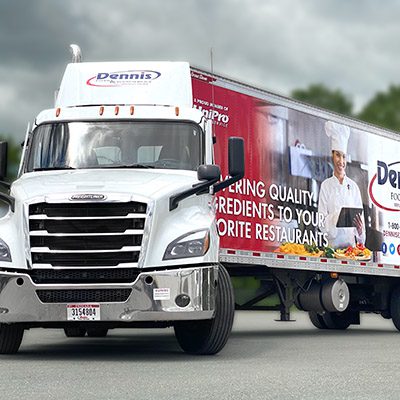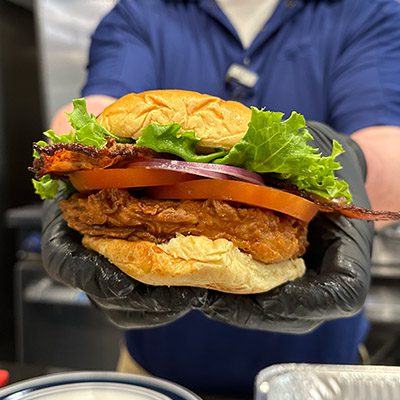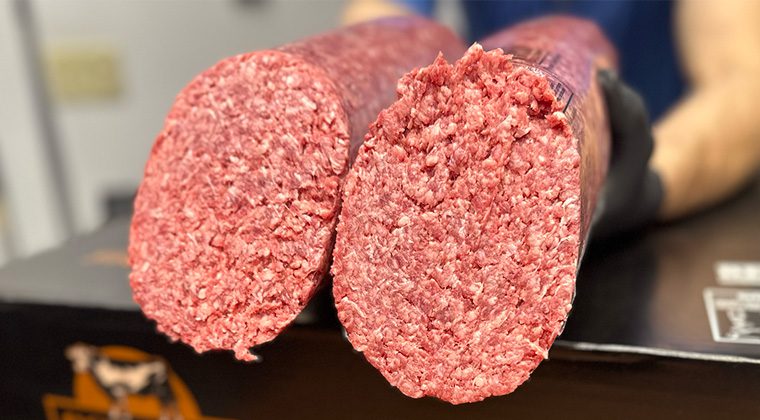
Foodservice Trends to Watch in 2019
As consumer preferences cycle forward at a furious pace, restaurant operators and their partners are working to meet next- level expectations for everything from food and flavors to marketing and sustainability.
It seems that every shift to the restaurant landscape brings with it a list of questions: What is the next hot flavor trend to watch? Which segment truly owns convenience? What is today’s definition of health? What type of technology is up and coming next?
Technomic looked into their crystal ball at a set of wide-ranging factors affecting the restaurant industry and compiled seven key trends that are sure to gain traction over the next year and beyond. “These industry trends are converging at a time of great disruption and opportunity for restaurant chains,” said Joe Pawlak, managing principal, advisory group, Technomic. “From the menu to service amenities, consumer demands are intensifying. From our perspective, companies that invest in meeting these needs are in the best position to reap rewards in 2019.”
Let’s take a closer look at the trends that are predicted to have a lasting impact on restaurant menus, service strategies and best practices in 2019.
1. Cuisine from the Levant Coast
Growing interest in Israeli cuisine over the past few years has led to increased flavor innovation from Israel’s surrounding countries. Specialties from Lebanon, Syria and Turkey are especially finding momentum in trendy independent restaurants. Sauces such as s’chug, pomegranate molasses, toum, labneh and tahini are finding new and innovative applications, in addition to ingredients including urfa, lavash and even schmaltz. But once exploration throughout the Levantine matures, what’s next? A likely winner, by way of Turkey as a bridge, is the Balkans.
Find more in global flavors…
2. Natural, Functional Ingredients
Functional foods are the “it” health trend today. The first wave of the trend is in full form: Operators are promoting natural remedies such as turmeric as ingredients that fix something in the body that’s lacking in some way. 2019 will see a blossoming of the second wave of the functional trend: natural enhancements, meaning ingredients that enhance something in the body, even facets that don’t necessarily need fixing, such as brain function, beauty and mental health. Expect to see more innovative uses of ingredients such as collagen for beauty, cannabis for relaxation and karkade for stress relief, and operators calling out these specific benefits directly.
See what our Chef has been adding to his pantry…3. Eating with Their Eyes, Visuals Influence Menus
Over the past few years, Instagram and other photo-sharing apps have revolutionized the food industry. Restaurants have even created food and beverage with social media in mind. But now, Instagram stories, Facebook Live and YouTube have extended the trend beyond what works in a single snapshot to what plays well through videos. Audio enhancements such as popping candies or items that move or alter in time such as color-changing cocktails, glitter beer and bonito-topped foods wow diners, especially young ones. Because social media is evolving so quickly, expect menu trends to adapt in funky ways.
See tips for a DIY food photoshoot…4. Premium To-Go, Delivered
Off-premise dining is booming, and third- party food delivery companies are stepping up to feed an on-demand culture. But between top players like Grubhub and Uber Eats, and startup companies eager to get into the game, the third-party field is crowded and companies are hustling to differentiate. Subscription models that eliminate per-delivery fees in favor of a flat-rate subscription will emerge to present a clearer value proposition for consumers. For third-party delivery services on pace to win the “last mile” with consumers, subscription programs may be the next incentive to provide a true competitive edge.
There’s more to know about To-Go…5. Meat-Free is Going Mainstream
Plant-based dining now means more than just swapping meats for veggies; it represents a strategy that includes zero waste policies and a wider focus on sustainability. More and more restaurants and municipalities are banning plastic straws in an eco-friendly push to eliminate waste and pollution, and operators are making recyclable or compostable, plant-based food packaging a priority. Is meat next up in eco-conscious consumer cross-hairs? We’re already seeing companies outside the industry put policies in place to ban meat consumption on-site and to incentivize employees not to order meat when they dine out.
Discover the meatiest meatless option available today…6. Tech is Transforming the Experience
Technology amenities, from drone delivery to app-based to-go ordering, are redefining convenience and putting “frictionless” foodservice front and center. But if the future is indeed frictionless, what lasting impact will it have on customer experiences and person-to-person interaction? Are brands poised to suffer in an environment where staff may no longer be the communicator of its identity? Restaurant companies committed to both tech-enabled convenience and the personal touch will be working to strike a balance between the two.
Find more foodservice-focused social strategies here…7. Coffee of Course, Remains Considerable
Strong beverage programs remain a carefully considered part of operator profit margins, but now more than ever your coffee choices (or lack thereof) could make-or-break your repeat traffic. Cold brew coffee is here to stay, and will very likely become much more widespread in 2019. Many consumers like its smoothness, its hints of chocolate and its implicit sweetness, and manufacturers have figured out how to make a very consistent product and are delivering it in kegs or in concentrate to restaurants, bars and coffeehouses. Considering that cold brew coffee is estimated to be an 18 billion dollar business in 2020. Consumers have proven that cold brew is here to stay.
Sales boosting strategies for coffee, tea and cocoa…What’s Next?
The next year will continue to reveal the power of disruption. Multiple channels beyond restaurants—from retail foodservice and noncommercial segments to third-party companies—will galvanize behind what consumers want and drive efforts to meet their needs. In an era of consumer hyper-choice, restaurants will have to do more to stand out and execute seamlessly in terms of exceptional service, food quality, social presence and sustainability.
By Aimee Harvey, Managing Editor, Technomic
with edits by Dennis Food Service









